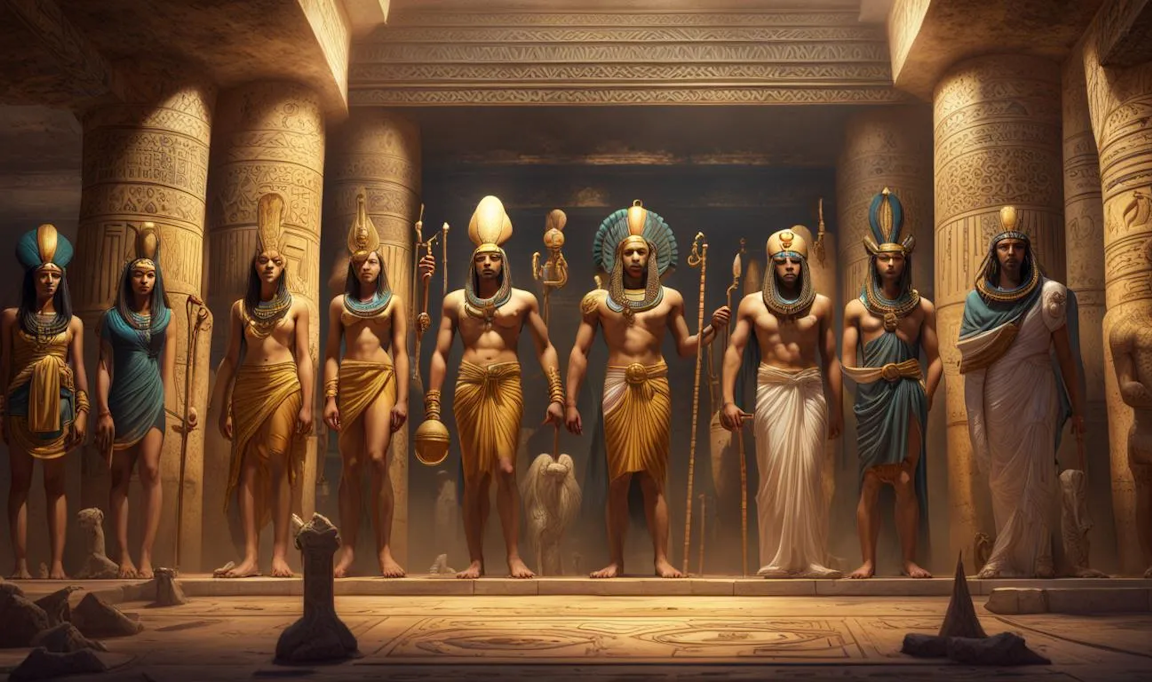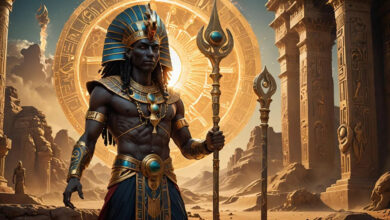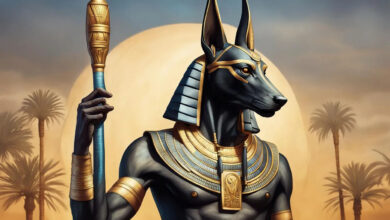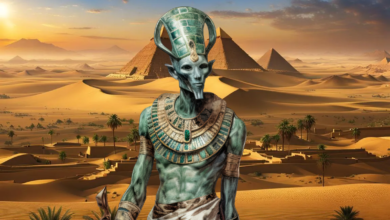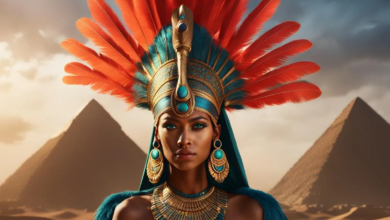In the heart of ancient Egyptian religious practice stood the Ennead of Heliopolis, a pantheon of nine deities revered not just for their individual attributes but for their collective narrative, embodying the creation, sustenance, and cyclical nature of life itself. Heliopolis, now part of modern Cairo, served as the focal point for the worship of this divine assembly, whose mythology penetrates the core of Egyptian cosmology.
At the genesis of this cosmological framework is Atum (or Ra), the progenitor of the gods, who, according to myth, emerged from the primordial chaos of Nun. In a universe devoid of form, Atum manifested himself spontaneously, embodying the sun and the principle of creation. He is the linchpin in the story of the cosmos, birthing Shu, the god of air and light, and Tefnut, the goddess of moisture, through a union with himself. This self-creation and subsequent generation of life are central themes, illustrating the self-sufficient and cyclical nature of the Egyptian universe.
Shu and Tefnut, embodying the principles of air and moisture, respectively, gave birth to two other pivotal deities: Geb, the earth god, and Nut, the sky goddess. Their union represented the tangible world, with Nut arching over Geb, separated by Shu, symbolizing the air and space between earth and sky. This physical depiction of the cosmos underscores the Egyptians’ perception of the world as an interconnected and divine entity.
From the union of Geb and Nut came four deities who play significant roles in Egyptian mythology:
- Osiris, as the god of the afterlife, resurrection, and agriculture, signifies the cycle of life, death, and rebirth, a concept that was central to Egyptian religion and culture.
- Isis, his sister and wife, embodies the ideals of motherhood, magic, and fertility.
- Seth, the god of chaos, storms, and violence, represents the necessary chaos that brings change and renewal.
- Nephthys, associated with mourning and night, complements this dynamic, illustrating the balance between light and dark, life and death.
To summarize, the Ennead of Heliopolis includes:
- Atum (Ra): The creator god, embodying the sun and creation.
- Shu: God of air and light.
- Tefnut: Goddess of moisture.
- Geb: Earth god.
- Nut: Sky goddess.
- Osiris: God of the afterlife, resurrection, and agriculture.
- Isis: Goddess of magic, motherhood, and fertility.
- Seth: God of chaos, storms, and violence.
- Nephthys: Goddess of mourning and night.
The narrative arc of these deities, especially the tale of Osiris’s murder by Seth and his resurrection by Isis, serves as a metaphor for the agricultural cycle of Egypt, tied to the ebb and flow of the Nile River, and the eternal struggle between order and chaos. This story, rich in symbolism, not only reflects the natural phenomena but also the ethical and moral philosophy of the Egyptians, emphasizing themes of loyalty, perseverance, and the triumph of good over evil.
The Ennead of Heliopolis, therefore, is much more than a mere collection of deities; it is a complex and interwoven narrative that reflects the Egyptians’ understanding of the world around them, their values, and their beliefs in the afterlife. The cosmology of the Ennead encapsulates the essence of Egyptian religious thought, centred on the principles of creation, the importance of harmony and balance, and the cyclical nature of life. Through their worship and rituals, the ancient Egyptians sought to align themselves with these divine forces, ensuring stability and order in their world and securing a place in the afterlife. The legacy of the Ennead, thus, transcends mere mythology, offering insight into the heart of ancient Egyptian civilization and its enduring fascination with the divine.

